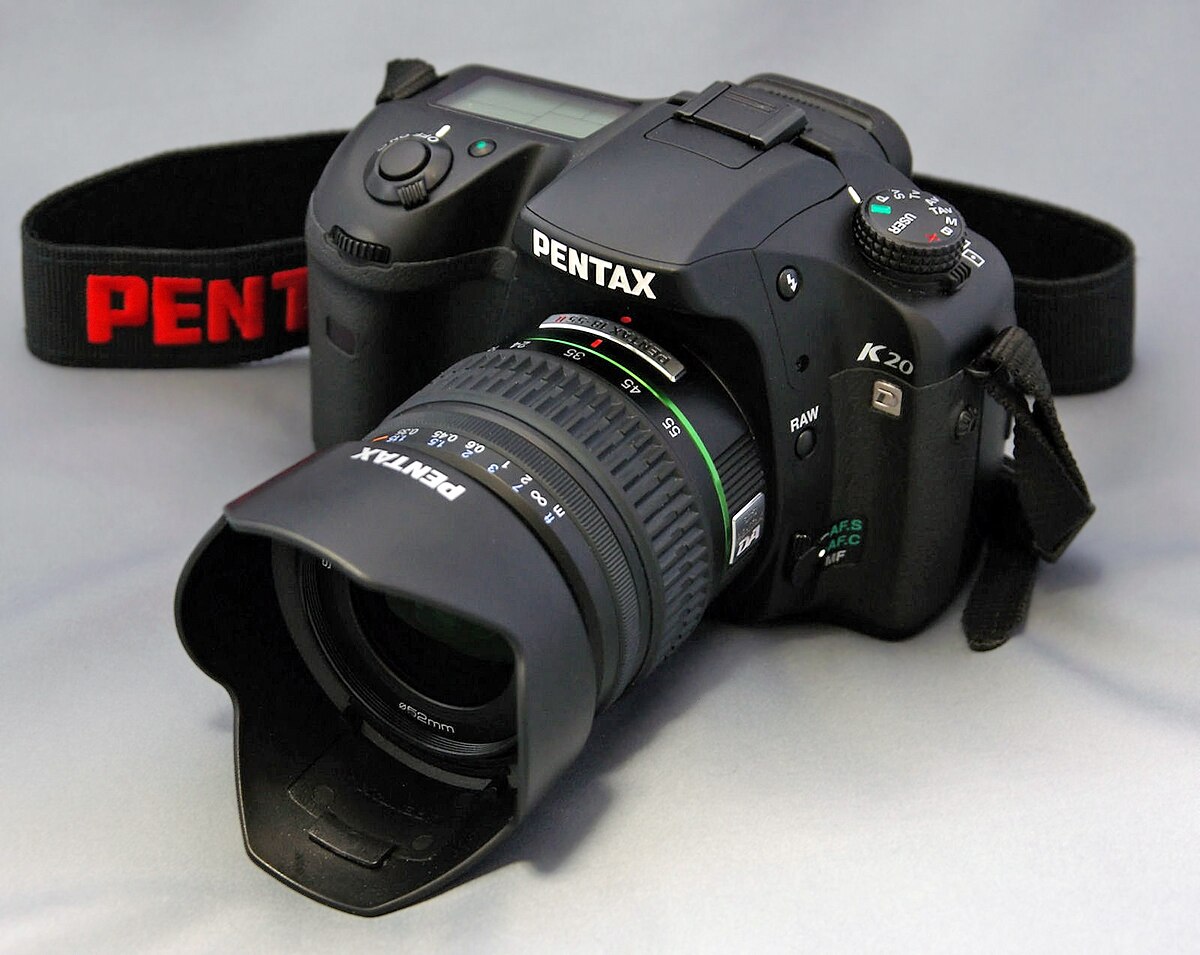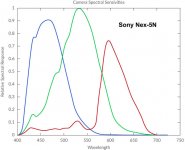Nod
Tootles
- Messages
- 45,593
- Name
- Nod (UK)
- Edit My Images
- Yes
further investigation shows the name is owned by Ricoh it would seem..
Shows how out of touch with things I am - I thought they were Samsung owned!
further investigation shows the name is owned by Ricoh it would seem..
Hoya owned Pentax before Ricoh, I don’t think Samsung ever had any involvement.Shows how out of touch with things I am - I thought they were Samsung owned!

The link appears to be a co-development deal that resulted in a number of of shared designs...Hoya owned Pentax before Ricoh, I don’t think Samsung ever had any involvement.
...In 2005, Pentax Corporation partnered with Samsung to share work on camera technology and recapture market ground from Nikon and Canon. Pentax and Samsung subsequently released new DSLR siblings from this agreement. The Pentax *ist DS and *istDL2 also appeared as the Samsung GX-1S and GX-1L, while the jointly developed (90% Pentax and 10% Samsung) Pentax K10D and K20D gave birth to the Samsung GX-10 and GX-20 respectively. Some Pentax lenses are also rebranded and sold as Samsung Schneider Kreuznach D-Xenon and D-Xenogon lenses for Samsung DSLRs. However, both brands are completely compatible with Pentax and Samsung DSLRs. In 2017, Samsung announced its departure of the camera market.

Seeing the picture in Monochrome helps with is this photo going to work in mono chrome , I find shooting in colour and then covering later you realize that it just doesn't work quite often, With all my cameras if I shoot in B&W that all I get .So what is the point of having the ability to shoot in monochrome when I can turn a colour picture into B&W any time I like?
I suspect, but can’t prove, that the reason monochrome photos were so widely accepted so quickly and for so long was because people were unconsciously experienced at seeing in mono.
I’m not argue about any colour aspects of photography/cameras as I’m red-green colour blind which may also be a factor in my generally preferring mono!
‘No, I didn’t mean that, more that people accepted as an interpretation of the world. Doesnt colour photography go back almost to 1850.Do you mean B&W was accepted as colour film was not available.
In fact if colour film had been created in the 1850's would black white film have existed into the 20th century?
The color filter array (Bayer CFA) over the color image sensor is an absorptive filter. E.g. the red filter is red because it absorbs all other color wavelengths. And therefore those wavelengths are not available for exposure of that photosite/pixel.Reading the info about the new Pentax K3-iii Monochrome that is being launched (expected price circa £2199 I believe), it suggested that the removal of the colour capability in the sensor improved the capture of luminescence of now-B&W only pixels, this reducing noise and getting better sharpness, although it did go on to suggest that the changed pixel performance created a more grainy feel. Not sure I understand any of that, but it did get me interested, at 1/4 the price of the Leica M11 Mono.
I have old Leica iiia and g models, and totally agree about the film loading and viewfinders! Lovely engineering though (although I prefer Contax in general for build and functionality).
‘No, I didn’t mean that, more that people accepted as an interpretation of the world. Doesnt colour photography go back almost to 1850.Do you mean B&W was accepted as colour film was not available.
In fact if colour film had been created in the 1850's would black white film have existed into the 20th century?
It wasn't until the 1960s that general use of colour film became common. In the 1970s, penetration of the high speed integrated film processing and printing machines into the high street, made it popular with the casual user.‘No, I didn’t mean that, more that people accepted as an interpretation of the world. Doesnt colour photography go back almost to 1850.
That’s more or less my point. That people (ie the public, not necessarily photographers) easily accepted B&W as a representation.It wasn't until the 1960s that general use of colour film became common. In the 1970s, penetration of the high speed integrated film processing and printing machines into the high street, made it popular with the casual user.
Actually that’s sort of relevant to this topic for me. Back then I had a colour tv but also a very good Bang & Olafson B&W TV. I always watched old B&W movies on the B&O as the rendition was so much better — I was going to say “the colours were so much better”For the more ancient amongst us, you may remember Ted Lowe commentating a on a snooker match in the 1970's:
"And for those watching in black and white, the pink is behind the green."

Hoya owned Pentax before Ricoh, I don’t think Samsung ever had any involvement.
Most of that is vague opinion at best... the part about shadow detail/noise is due to the lack of a CFA and the photosites getting more light. But to say it's going to be better than any other camera, no matter the technology/generation, is a huge stretch at best. The lack of a CFA is about 1 stop benefit... i.e. the first stop.Slightly different view on the advantages of a mono camera — long but the early part refers:
Most of that is vague opinion at best... the part about shadow detail/noise is due to the lack of a CFA and the photosites getting more light. But to say it's going to be better than any other camera, no matter the technology/generation, is a huge stretch at best. The lack of a CFA is about 1 stop benefit... i.e. the first stop.
That's generous of you... I didn't get that at all.it’s an account of his experience with the Q2 and so valid for him at least.

We’ll just have to agree to differ!That's generous of you... I didn't get that at all.
In terms of comparing the Q2 vs Q2M there is a little over a one stop benefit. But there is about zero benefit compared to a similar resolution color camera like the Nikon Z7 (in terms of DR/shadow information/noise).
View attachment 386788
I think it should be applauded, i for one am also convinced and have placed a pre order fingers crossed the release date stays the same and iam included in the first batch of their deliveries.Regardless of the technical argument (and I am persuaded by it myself anyway), if it gets more people buying Pentax DSLR's it's a good thing. Ricoh developed this because Pentaxians asked for it, so it's nice to see that their response to the fanbase is rewarded.
I've pre-ordered too. Fingers crossed it isn't delayed. I just bought a lens from MPB to use with it (Tamron 10-20) but will test it on my MZ5 film camera first.I think it should be applauded, i for one am also convinced and have placed a pre order fingers crossed the release date stays the same and iam included in the first batch of their deliveries.
That lens will be a good wide angle length on the K3 III, i have a 20-40 limited but it is in silver. I will see what it looks like when the camera arrivesI've pre-ordered too. Fingers crossed it isn't delayed. I just bought a lens from MPB to use with it (Tamron 10-20) but will test it on my MZ5 film camera first.
So you have say 24mp of which 12 only see green and 6 each red and blue (more green as the eye sees more green than other colours). So a blue sky that covers half the frame is 12mp of the photo but only 3mp in the half capture blue so half the sky is interpolated. Same with red and a bit better for green areas.
It's more complicated than that... it's an oversimplification to say the photosites see/receive R/G/B. What exactly would be "red" anyway? The filters/photosites act more like the cones in the human eye... with sensitivities biased towards long/medium/short wavelengths; and quite a bit of overlap.Apparently................
A color sensor has an RGB filter above it and splits the image into red,green and blue; so a 60mp color sensor showing a B&W image is only around 20 megapixel where as the monochrom version uses a full 60MP as there is no filter array.

 ThornbyHall-1 by Lindsay Pennell, on Flickr
ThornbyHall-1 by Lindsay Pennell, on Flickr